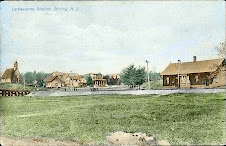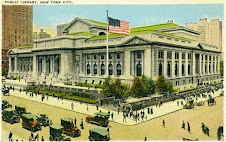 Almost everyone who is familiar with the James Bond series of films certainly has seen Goldfinger. And, anyone who has seen it will know how Auric Goldfinger deviously avoided import restrictions on gold by manufacturing ordinary objects (such as the fixtures on his own Rolls-Royce) to export his precious cargo out of England, and into Switzerland. At his Auric Enterprises plant, he installed golden chairs and other furnishings on the airplane that he used to travel to India. Once there, of course, the gold was melted down and sold at an enormous profit. From there, his greed led him to attempt to knock over Fort Knox, a plot, which, of course, was foiled by James Bond, with the support of his American colleague, Felix Leiter, with the U.S. Army in tow.
Almost everyone who is familiar with the James Bond series of films certainly has seen Goldfinger. And, anyone who has seen it will know how Auric Goldfinger deviously avoided import restrictions on gold by manufacturing ordinary objects (such as the fixtures on his own Rolls-Royce) to export his precious cargo out of England, and into Switzerland. At his Auric Enterprises plant, he installed golden chairs and other furnishings on the airplane that he used to travel to India. Once there, of course, the gold was melted down and sold at an enormous profit. From there, his greed led him to attempt to knock over Fort Knox, a plot, which, of course, was foiled by James Bond, with the support of his American colleague, Felix Leiter, with the U.S. Army in tow.When Ian Fleming created the archvillain Goldfinger, he did not look very far to obta in his inspiration. In fact, it was one of his very own acquaintances who provided the role model for him: "Platinum King" Charles Engelhard, Jr. (left). Engelhard, as president of Engelhard Minerals and Chemicals Corporation, which was headquartered in Newark, New Jersey, imported precious metals, the majority of it in platinum, for use in industrial machinery components, and was also needed for the manufacture of scientific instruments. Engelhard had said of his precious metals business that "we'll handle anything that's small in volume, but high in value. But our nub will be platinum."
in his inspiration. In fact, it was one of his very own acquaintances who provided the role model for him: "Platinum King" Charles Engelhard, Jr. (left). Engelhard, as president of Engelhard Minerals and Chemicals Corporation, which was headquartered in Newark, New Jersey, imported precious metals, the majority of it in platinum, for use in industrial machinery components, and was also needed for the manufacture of scientific instruments. Engelhard had said of his precious metals business that "we'll handle anything that's small in volume, but high in value. But our nub will be platinum."
 in his inspiration. In fact, it was one of his very own acquaintances who provided the role model for him: "Platinum King" Charles Engelhard, Jr. (left). Engelhard, as president of Engelhard Minerals and Chemicals Corporation, which was headquartered in Newark, New Jersey, imported precious metals, the majority of it in platinum, for use in industrial machinery components, and was also needed for the manufacture of scientific instruments. Engelhard had said of his precious metals business that "we'll handle anything that's small in volume, but high in value. But our nub will be platinum."
in his inspiration. In fact, it was one of his very own acquaintances who provided the role model for him: "Platinum King" Charles Engelhard, Jr. (left). Engelhard, as president of Engelhard Minerals and Chemicals Corporation, which was headquartered in Newark, New Jersey, imported precious metals, the majority of it in platinum, for use in industrial machinery components, and was also needed for the manufacture of scientific instruments. Engelhard had said of his precious metals business that "we'll handle anything that's small in volume, but high in value. But our nub will be platinum."In Engelhard's quest for greater wealth, he traveled extensively in South Africa throughout the late 1940's and into the 1950's, and maintained an estate in Johannesburg. It was there that he forged a business partnership with his close friend Harry Oppenheimer and his firm DeBeers, which resulted in the formation of the Anglo African Corporation of Southern Africa, which managed assets of an estimated three billion dollars-- a princely sum in those days. Engelhard also served as chairman of the American - South African Investment Company of Johannesburg, which managed his South African mine interests. Through his control of Anglo-African and American-South African, Engelhard was able to find a way around the import restrictions placed on gold bullion in South Africa, restrictions that enabled England to keep South Africa's wealth within its control. Engelhard, ever the resourceful industrialist, saw an opportunity in a loophole in the restrictions-- objets d'art made from gold were able to be exported out of South Africa without restriction. With that in mind, he formed Precious Metals Development, a business venture that manufactured religious objects, as well as other objets d'art out of gold from Anglo-African's mines. The finished works were then imported to Hong Kong, where they were melted down into bullion, and then shipped to Engelhard's factories for his industrial uses, or sold as bullion for profit.
It was around this time that Engelhard had met Ian Fleming, author of the James Bond series of novels. It is said that the two men may have met through one of Engelhard's London bankers, Robert Fleming and Company, which was founded by Ian's grandfather. They had become friends, and on occasion had discussed the possibility of forming some sort of business partnership together. Fleming, impressed by the extravagant lifestyle of his friend, found real-life inspiration for the villain in Goldfinger, which was published in 1959. After all, a man who maintained a fleet of jets at his personal disposal, owned estates all over the world, and who also owned champion racehorses was practically beyond reality!
Apparently, Engelhard enjoyed the comparisons people often made between him and his fictional counterpart. After the movie Goldfinger was released in 1964, he even took to calling one of the stewardesses on his personal jet "Pussy Galore." Which only proves the kind of larger-than-life character that Charlie Engelhard was.
Fact is stranger than fiction. Indeed.
Sources:
Epstein, Edward Jay. " The American Conspiracy." In The Diamond Invention. Online http://www.edwardjayepstein.com/diamond/chap18.htm. Text downloaded 14 October 2007.
Lycett, Andrew. Ian Fleming. London: Phoenix, 1996.
The New York Times. New York, New York, 3 March 1971.
O'Brian, Jack. "Voice of Broadway." Newark Star-Ledger. Newark, New Jersey, 21 September 1988.



No comments:
Post a Comment